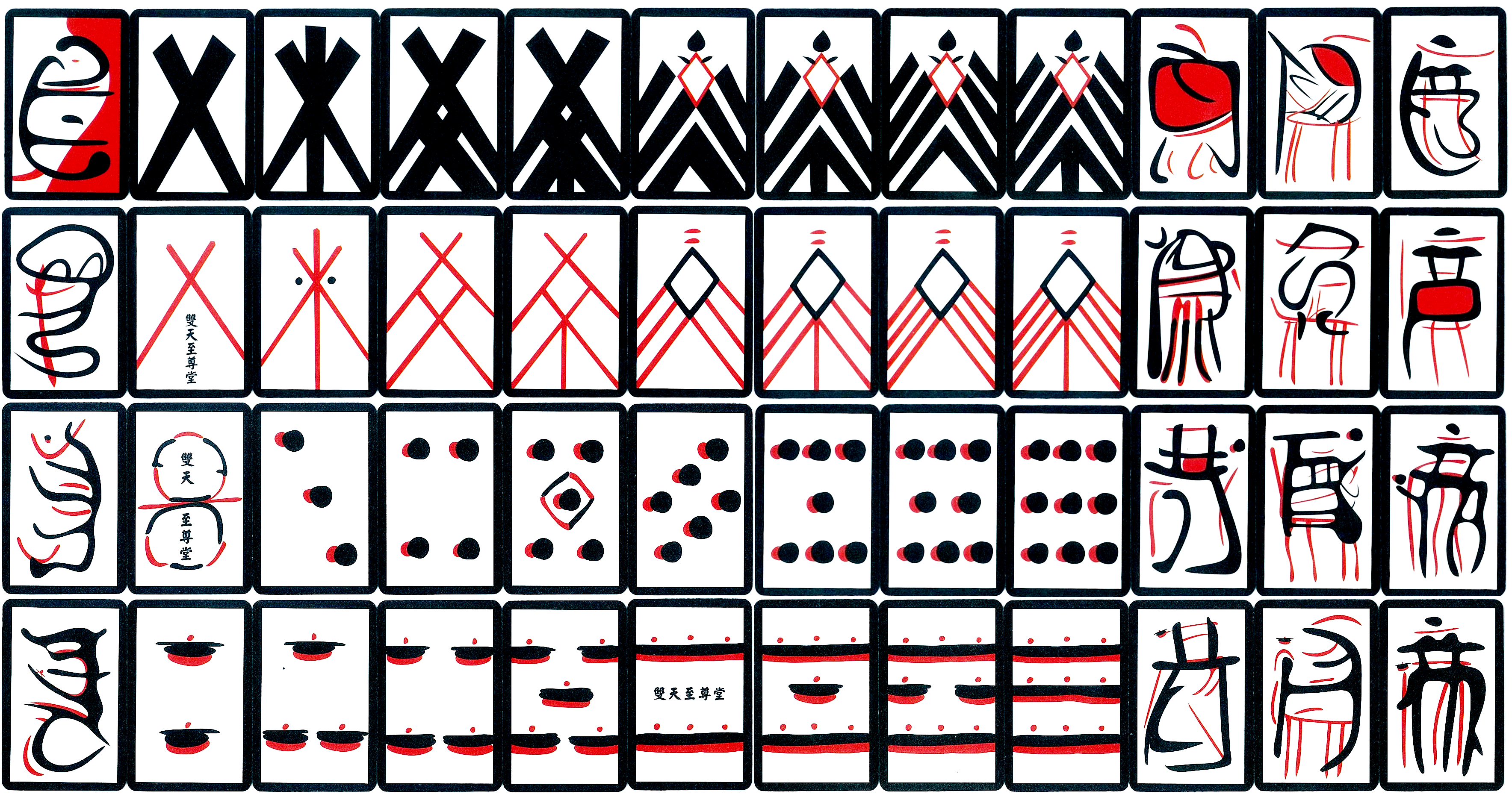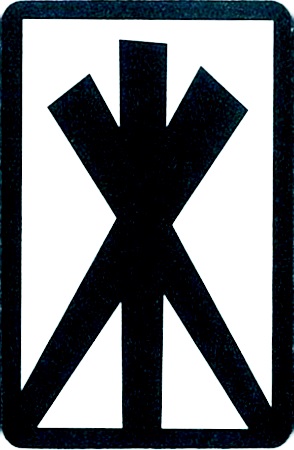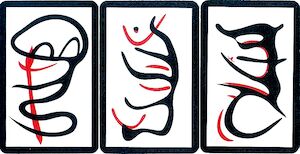カックリ · Kakkuri
Last updated: .
Kakkuri (カックリ) is the last surviving yomi (読み, ‘reading’) card game in Japan.A In 2005, it was still played in the town of Yafune, part of the city of Echizen, Fukui prefecture (福井県越前市矢船町).
Equipment
Kakkuri is played with komatsufuda (小松札), a deck of 48 cards which run from 1–12 in four suits. Alternatively, it can be played with Hanafuda cards if you are very familiar with the deck ordering, or you can play with a standard deck of cards by removing all s.

The 48 cards of the traditional komatsufuda deck.
Setup
As in other Japanese games, all actions (dealing and playing) are performed in an anti-clockwise direction.
The game is usually played for money: a stake should be decided between the players, and all payments are made in multiples of this stake (1×, 2×, 3×). Otherwise, these can be counted as points.
To begin, deal 6 cards to each player in groups of 3. The remaining cards are set in a stack face-down in the middle of the table; this is called the ‘box’ (箱 hako).
If there are 8 people playing, then there will be no cards leftover to form the box; instead, whoever received the of pao (or with standard deck) drops out and their hand is shuffled to become the box.

The 3 of pao, also known as 黒火箸 kuro-hibashi ‘black fire tongs’.
© George Pollard, 🅭🅯🄏🄎
Before looking at their cards, each player in turn can exchange their hand with the dealer’s hand. This can happen multiple times so that players can end up with the hands of previous players if multiple players swapped.
Next, the players look at their cards. If any player has been dealt the non-red s of isu, ouru, and kotsu (or if playing with standard playing cards), then they win instantly and are paid 3× by each other player. This is called utazu ウタズ (from 打たず, “without playing”).

The s of isu, ouru, and kotsu.
© George Pollard, 🅭🅯🄏🄎
Play
To start play, the dealer turns up the top card of the box, which will count as the first card played. The dealer then takes the first turn.
On a player’s turn they may play several cards. Each card must be one rank higher than the last card played (e.g. if the last card is a , you can only play a ). However, a can be played after a , and a can be played after a . When the last card played is a kiri (or ), then any rank can be played next. Suits do not matter, and cards are played on the table in front of the person playing them, rather than in the middle of the table (this makes it easier to see how many cards each player has remaining).
In addition, the of pao () and of ouru () are wild and can be played as any other card. If turned up from the box they count as a normal & .

The wild cards: of pao and of ouru.
© George Pollard, 🅭🅯🄏🄎
There are two other special cases that allow more than one card of the same rank to be played:
If a player has three cards of the same rank they can play all of them together. Four cannot be played together, but you can play three cards out of a set of four.
If a player’s hand consists of three pairs, then any time before they play their first card they can declare ‘three pairs’ (三足 sansoku). After that they can (and must) play their cards in pairs.
Once a player has finished their turn, they say “pass” and it is the next player’s turn. Passing is ‘soft’ and doesn’t prevent a player from playing again later in the round.
As long as they haven’t played any cards yet, a player can drop out on their turn by paying 1× to the pot.
After all players pass in a row without playing, the last player that played any cards can either take another turn, or turn up a new card from the box and then take another turn.
The first player to get rid of all their cards wins and all other players (who did not drop out) must pay 1× to the pot, which the winner takes. If a player wins by playing all their cards in one go, then everyone else must pay 2× instead; this is called グリ guri. Note that you can still claim guri if you have had previous turns but did not play any cards, so if you see someone passing a lot without playing any cards, be careful!
The winner becomes the dealer for the next game.
References
Kuromiya, Kimihiko (). ‘Kakkuri: The Last Yomi Game of Japan’. Journal of the International Playing-Card Society vol. 33 (4).